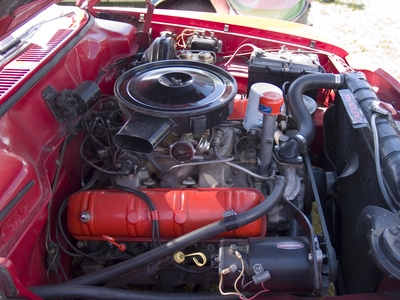
When you have a car that won't start or even turn over, which mechanics call a, "no start no crank," review your recent repair records. Note if your mechanic replaced a battery, battery cable, alternator, starter or anything that would require disconnecting the battery. If so, it could be as simple as a loose connection or a defective part. Check the battery with the voltage meter first--it should read between 12.5 and 12.8 volts. If the battery is past its useful life (48 to 72 months), replace it.
Grab the terminals and twist them by hand. Make sure the battery terminals are not loose on the posts. A bad connection can cause low voltage to the starter and it will not crank the engine. Remove the loose terminal using a wrench, clean any corrosion from the terminal and post with a battery terminal cleaner and tighten the terminal securely to the battery post with a wrench.
Check the cable where it meets the terminal. If it's loose and it's the kind of terminal that clamps to the cable, loosen the clamp bolts holding the cable to the terminal with a wrench, pull the cable out, clean the cable and terminal with the terminal cleaner, insert the cable between the clamp and terminal and tighten the clamp bolts with a wrench.
Cut the old terminal off the cable with diagonal cutters if the cable is frayed or broken where it meets the terminal and can't be tightened; strip about one inch of insulation off the cable with the diagonal cutters, loosen the clamp bolts on the new terminal with a wrench, insert the cable between the clamp and terminal, tighten the clamp bolts with a wrench, connect the terminal to the battery post and tighten it with a wrench.
Check the negative cable where it bolts to the engine and frame to make sure it is not loose. Check that the positive cable is not loose where it connects to the starter. If any of these cables are loose, this could be the cause of the problem. Tighten them with a wrench or socket wrench.
Connect the spring clamp on one of the starter button wires to the the battery terminal on the starter solenoid and the other one to the command terminal. Push the button--if the starter cranks the engine, the solenoid has failed. Replace the solenoid or, if it is part of the starter, replace the starter.
Check the manufacturer specs for how many amps the starter should be drawing. Connect your meter and watch the reading as you attempt to crank the engine. If the draw is too high or too low, replace the starter.
Raise the vehicle with a floor jack and support it with jack stands. If noise is coming from the starter, but the engine isn't cranking, check the starter gear and the flywheel for damaged or missing teeth. If this is the case, the starter or flywheel will need replacement.